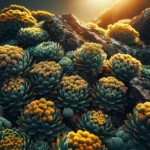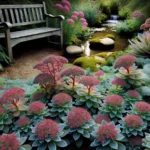Introduction to Sedum Kamtschaticum
Imagine a plant that laughs in the face of drought, shrugs off pestilence, and beautifies your garden with minimal fuss. Ladies and gentlemen, let me introduce you to Sedum Kamtschaticum, affectionately known by the tongue-twisting moniker of Russian stonecrop. This succulent hero hails from the rugged terrains of Russia and Japan, bringing with it an exceptional mix of resilience and charm.
There’s something truly inspiring about how Sedum Kamtschaticum adorns rock gardens and edges with its emerald green foliage. It’s like watching nature’s own tapestry weave itself across your garden beds. And don’t let its dainty yellow blossoms fool you; this plant is as tough as they come. Picture this: It’s a scorching summer day, and while other plants wilt, your Russian stonecrop stands proudly, basking in the sun’s fiery glow.
I recall a friend who barely glanced at her garden, yet her Sedum Kamtschaticum thrived, casting a vibrant green spell among her stones and pavers. It’s the plant equivalent of that friend who always looks impeccable, regardless of the situation. And speaking of upkeep, there’s a treasure trove of care tips to ensure your Russian stonecrop is always at its best – sturdy, yet elegant.
If you’re itching to get your gloves on and dive into the world of these robust beauties, why not start with a visual guide to Sedum propagation? Check out the video below and let the green-thumbed gurus lead the way to a lush, undemanding garden buddy that’ll make your neighbors green with envy.
${‘‘}
Through it all, whether your thumbs are seasoned with green or you’re a budding gardener, Sedum Kamtschaticum is a testament to nature’s ingenuity. A little sun, a little care, and voilà – your garden is transformed by this unassuming yet mighty stonecrop. So why not give it a go? The introduction to your garden’s success story could very well start with Sedum Kamtschaticum.
Botanical Profile: Understanding the Species
Welcome to the captivating world of Sedum Kamtschaticum, a succulent that’s not only a visual delight with its lush foliage and vibrant flowers but also a fascinating specimen in the world of flora. Unravel the secrets behind this hardy groundcover’s success in your garden as we delve into its botanical essence.
Sedum Kamtschaticum, known for its carefree growth habits, has a knack for making itself at home just about anywhere in your outdoor space. Whether it’s basking in the golden afternoon sun or nestling in the dappled shade, this plant radiates vitality. With leaves that are plump, rich, and often tinged with enticing hues of green and red, it’s a pleasure to witness its year-round performance. Climatic resentment isn’t in its dictionary; this sedum stands resilient from the cool whispers of zone 3 through the warm embrace of zone 8.
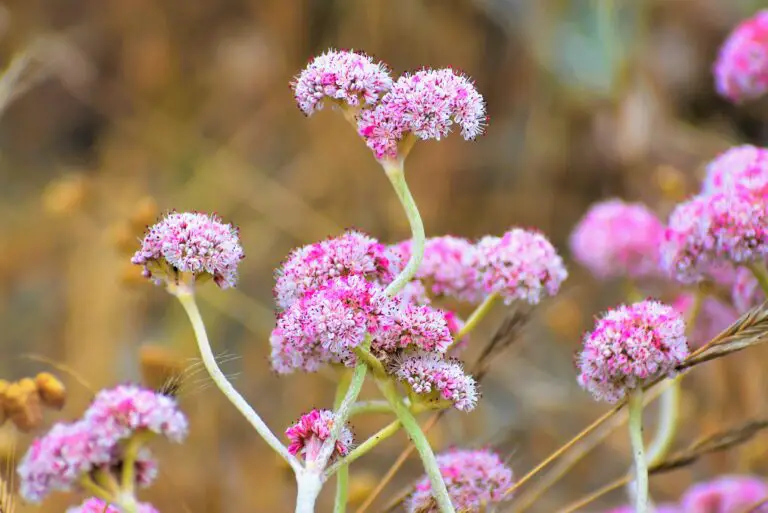
During the blooming season, one cannot help but marvel at the star-shaped flowers bursting forth in a kaleidoscope of yellows and oranges. It stands as a brilliant masterpiece against the canvas of your garden. These floriferous shows aren’t just for your eyes; they’re a siren call to a myriad of pollinators. Prepare to host a buzz of activity, as bees and butterflies become regular guests, charmed by the sweet nectar and vivid colors of Sedum Kamtschaticum’s blooms.
Looking for tips on how to cultivate these vibrant treasures in your own space? Explore the delicate balance of sunlight and shade this plant needs, which is crucial for its optimal performance. Meanwhile, for those intrigued by the various types of succulents, find inspiration in the enchanting array of succulents that could accompany your Sedum in the garden.
Let’s not forget, the foliage of Sedum Kamtschaticum plays its part in the spectacle as well. The leaves are like little emerald paddles, often outlined with a bold red margin. As easy on the eyes as they are, these leaves are also a practical choice for any gardener; drought tolerance and a carefree attitude to pests make them extremely low maintenance. Just plant, enjoy, and watch your garden flourish with minimal fuss!
Embrace the rugged charm and effortless grace of Sedum Kamtschaticum. It’s a botanical wonder that promises to enrich your garden tapestry with minimal effort. Let its resilient nature and cheerful disposition bring endless joy and vibrant color to your gardening adventure.
Optimal Growing Conditions
Let’s turn that green thumb into a ‘Sedum Kamtschaticum’ maestro! Craving sunshine and a perfectly drained soiree, this vibrant succulent is a garden’s delight. Picture a sunny patch in your garden, drenched in gentle morning light—this is the sweet spot where your Sedum Kamtschaticum yearns to bask. Equipped with a succulent’s resilience to drought, this plant flourishes under full sun to part shade conditions, eager to soak in at least six hours of sunlight daily. Think of it as its daily sun salutation, if you will.
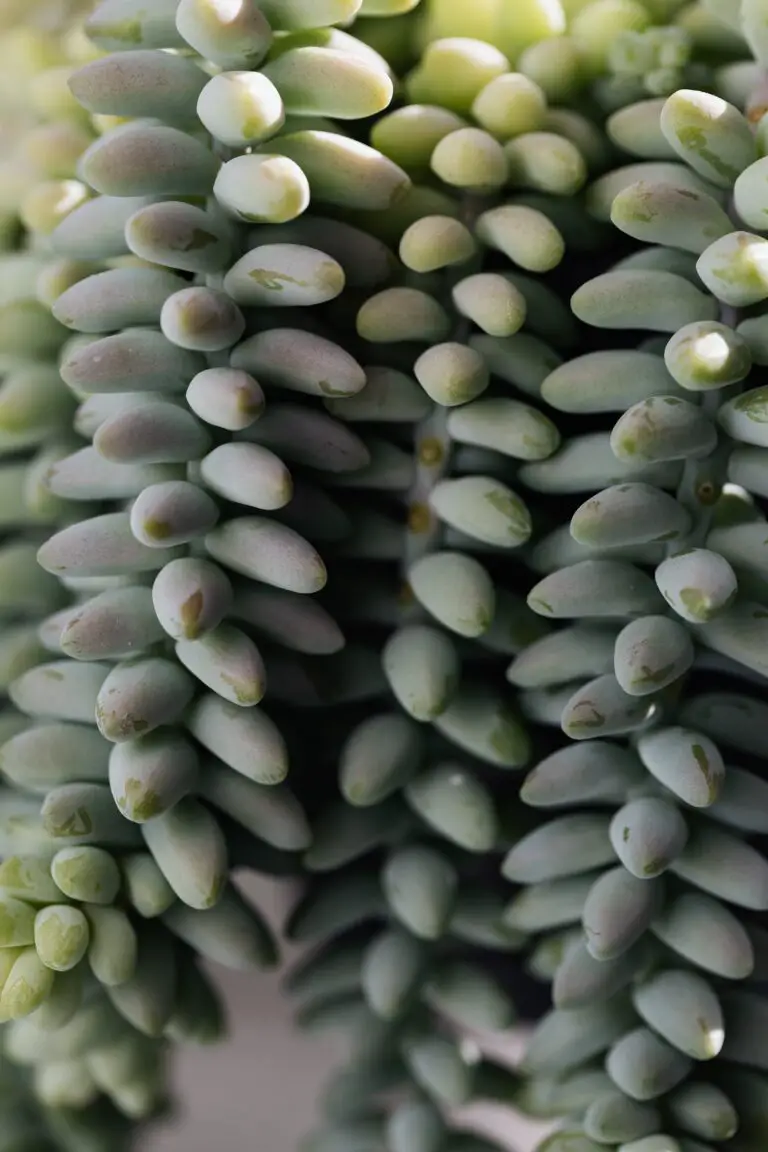
Next up, let’s talk about the mercury in the thermometer. Sedum Kamtschaticum is hardy to USDA Zones 4 through 9, unfazed by the chill of winter with a warm coat made of its succulent leaves, nor by the summer’s scorch, as it lounges like a sunbather at the beach. Yet even the most versatile plants appreciate moderation, and our Sedum friend prefers temperatures ranging from 60 to 75°F (16 to 24°C) during its active growing season for that peak performance.
Now, if plants had a dating profile, Sedum Kamtschaticum’s would say “Looking for rich, well-draining soil with a pH from neutral to slightly acidic.” It’s in these soil conditions that the roots spread with ease, avoiding the unwelcome advances of root rot. Whether you’re introducing this gem into your beds or a container on your patio, make sure the potting mix is as well-drained as a gourmet colander.
Feeling unsure about your soil? Take a cue from our succulent soil guide for pointers on perfect plant growth. Mix in a bit of sand or perlite, and you’ve got the cushy, airy foundation Sedum Kamtschaticum dreams of.
Embedding Sedum Kamtschaticum into such optimal growing conditions is akin to framing a masterpiece—it’s crucial to the display. So arm yourself with these essential tips, and you’ll witness the awe-inspiring transformation of these snazzy succulents. Happy gardening, plant whisperers!
Planting and Propagation Techniques
Ok, green thumbs and succulent enthusiasts! Let’s dive into the sensational world of Sedum Kamtschaticum. You might be wondering, “How do I add this vibrant star to my garden cosmos?” Well, stick with me, and you’ll be propagating these beauties like a pro. First off, let’s gear up for some planting action!
We begin our planting adventure by selecting a spot where the sun generously bestows its warm embrace – full sunlight is what we’re aiming for here. Get yourself a well-draining potting mix; after all, we want to create a penthouse suite for our Sedum Kamtschaticum, not a swamp. Lay down the roots in their cozy, new bed, covering them gently with soil, whispering sweet nothings as you secure them in their place.
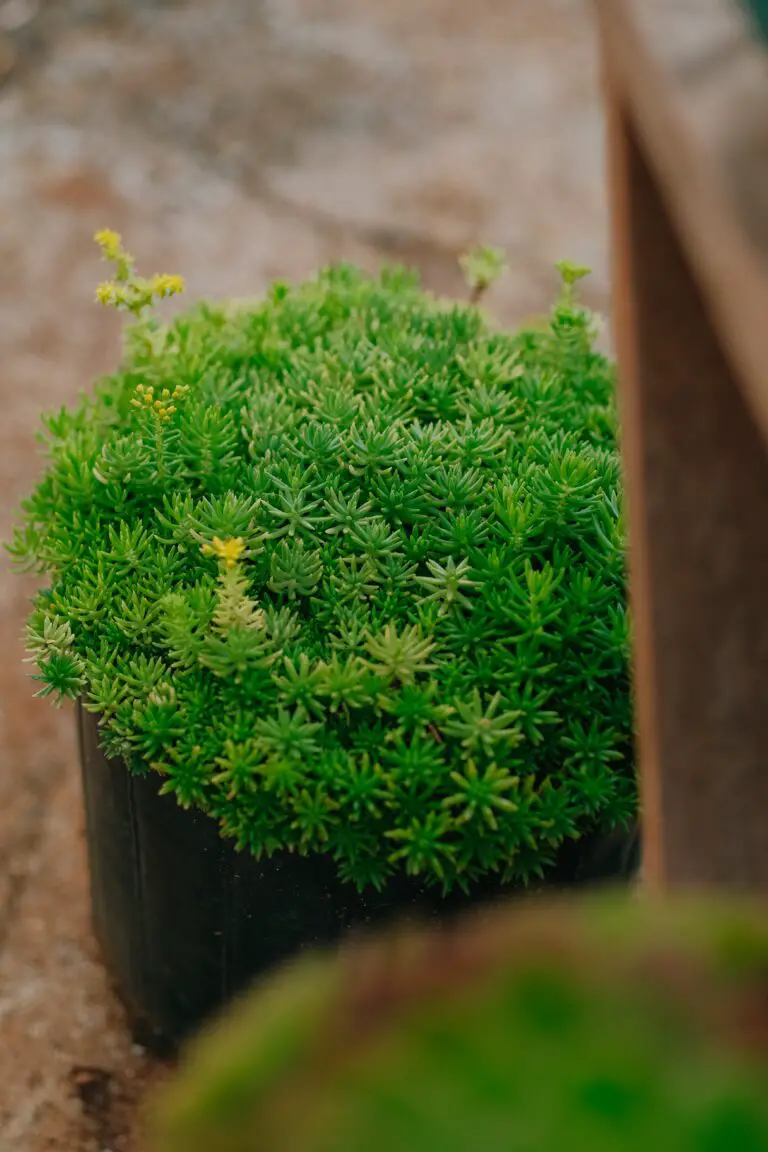
Then comes the watering ritual. We’re not making soup here, folks, so just a modest drink to quench its thirst will do. Over time you’ll notice your Sedum establishing itself, with plump leaves flourishing, eager to showcase their beauty.
For those looking to expand their collection, let’s talk propagation. Cuttings are your tickets to multiplying your Sedum family. During the lush spring, snip off a piece about 2-3 inches long, call it a mini Sedum start-up. Let the cut end callous over for a couple of days – think of it as a healing process preparing for new life.
Now, nestle your prepared cutting into a similar well-draining mix, or even better, introduce it into a communal pot where it can share stories with other succulent buddies from our succulent collection. Keep the soil slightly moist, like a morning dew, and before you know it, you’ll see new growth sprouting – a tiny garden victory dance is entirely appropriate!
Let’s be real – gardening is a bit like baking a sumptuous cake. It takes patience, the right ingredients, and a bit of magic whispered through your fingertips. But the result? A tantalizing display that will have both your heart and garden overflowing with joy. So, with these techniques in your arsenal, you’re all set to nurture your Sedum Kamtschaticum, transforming them from humble beginnings to the starlets of your garden show.
Caring for Your Sedum: Watering, Feeding, Pruning
Ensuring your Sedum Kamtschaticum thrives requires a trifecta of care: sufficient water, the right nutrients, and regular pruning. Let’s dive into the specifics of each and get your Sedum beaming with health and vitality.
The Watering Wisdom for Sedum Kamtschaticum
Water is a precious commodity for any plant, but when it comes to the robust Sedum Kamtschaticum, less is often more. These resilient plants are experts at conserving water, thanks to their succulent nature, meaning they prefer the soil to dry out between waterings. Imagine a light rain shower that refreshes the soil without leaving puddles. That’s the sweet spot for watering your Sedum. Overwatering can lead to a host of issues, including root rot, so stick to a schedule that allows the soil to breathe and your Sedum to flourish.
Nourishment Know-How: Feeding Your Sedum
While Sedum Kamtschaticum isn’t a fussy diner, it still appreciates a nutrient-rich meal. Springtime is the perfect moment to sprinkle a balanced, slow-release fertilizer into the soil, setting the stage for vigorous growth. Picture your Sedum as a budding athlete, gearing up for the growing season with a hearty breakfast. This one-time feeding should carry your Sedum through the season, but if growth seems sluggish, consider a light mid-summer snack of fertilizer to reinvigorate its spirits.
Pruning Practices for Peak Performance
Pruning isn’t just about keeping your Sedum looking tidy; it’s also about encouraging lush, healthy growth. As flowers fade, snip them off to redirect energy back to the foliage. Think of it as your plant taking a rejuvenating spa day, trimming away the old to make room for the new. And don’t shy away from cutting back overgrown sections in late winter or early spring. This will invigorate your Sedum, prompting it to produce a bounty of fresh, vibrant leaves that are a sight to behold.
Integrate these tips into your gardening routine, and watch as your Sedum Kamtschaticum becomes the envy of the neighborhood, flaunting its full, floriferous splendor throughout the growing season.
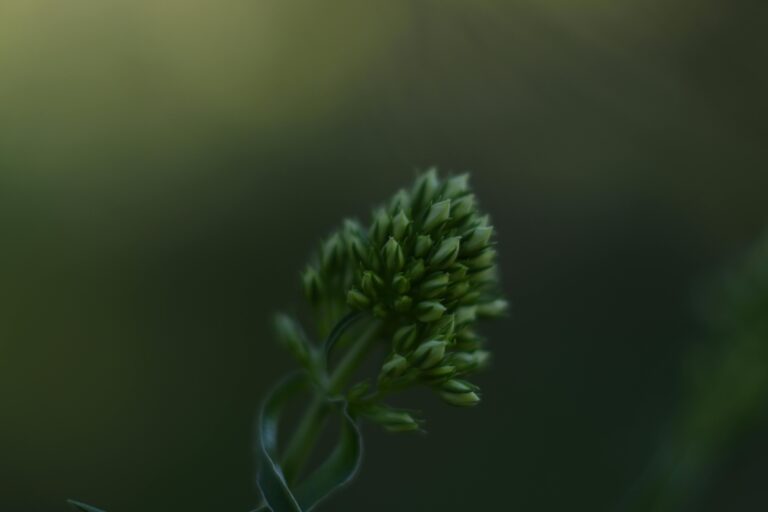
Common Pests and Diseases
Cultivating a lush garden with Sedum Kamtschaticum, sometimes known as “Russian Stonecrop,” is a gardener’s delight. However, these sturdy perennials aren’t without their foibles, particularly when it comes to the unwelcome attention of pests and diseases. As we dig deeper, exploring the common culprits that could dull their vibrant beauty, we’ll understand how to ensure your stonecrop stays as healthy as it is hearty.
Armoring Against Aphids
Imagine you’re admiring your verdant stonecrop when you spot them: tiny green or black specks scuttling over the leaves and stems. These aphids, sap-sucking fiends, are the bane of many a gardener. But fear not! Regular inspections and a gentle blast from your garden hose can send them packing. For those stubborn infestations, introducing ladybugs or applying neem oil may just be the safeguard your Sedum Kamtschaticum needs.
Battling the Snail Brigade
On a dewy morning, you might catch the glint of a snail’s trail on your once-immaculate stonecrop leaves. These slow-moving munchers favor the succulent leaves of your plush Sedum Kamtschaticum. A sprinkle of eggshells around the base or a pinch of diatomaceous earth can form a barrier they dare not cross. Engaging in these simple acts of defense can keep your plants unblemished and robust.
Shielding from Sedum Blight
But pests are only half the story. Sedum blight – a fungal menace – can swoop in under the guise of wet conditions. With the telltale signs of brown, wilted leaves, this disease can send gardeners into a flurry. Preemptive measures like proper spacing for air circulation and avoiding overhead watering are your first line of defense. Should the blight befall your garden, swift removal of affected areas and a fungicide tailored for stonecrops are your tools for revival.
Incorporating these proactive strategies into your gardening arsenal can keep your Sedum Kamtschaticum lively and thriving. Remember, the key to plant health often lies in early detection and timely intervention. So, keep those eyes peeled, and those hands ready — your garden’s vitality depends on it!
For a more visual guide on handling these green garden guests, check out this helpful video:
Designing with Sedum Kamtschaticum
When it comes to breathing life into your garden with resilience and color, Sedum Kamtschaticum, also known as Russian Stonecrop, is a top contender. It’s not just about adding a plant here and there; it’s about weaving a tapestry of greenery that stands up to the elements and delights the eye. Let’s dig into some creative ideas and design strategies to showcase Sedum Kamtschaticum in your garden canvas.
Incorporating Texture and Contrast
Imagine a garden that engages all the senses. The fleshy, oval leaves of Sedum Kamtschaticum offer a unique textural contrast against the fine blades of ornamental grass or the smooth surfaces of river rocks. Envision the plump foliage spilling over the edges of a stone retaining wall, softening the hard lines with a cascade of green that turns brilliant orange come fall.
A Tapestry of Foliage
Think about Sedum Kamtschaticum as a groundcover, creating a verdant carpet beneath a canopy of taller perennials or shrubs. In such a setting, this sedum fills the gaps, weaves through the garden, and bridges the spaces between other plantings, promoting a cohesion that is both visually appealing and functionally beneficial for soil health and weed suppression.
Visual Rhythm and Repetition
Designing with repetition can bring harmony to your garden. Use clumps of Sedum Kamtschaticum at intervals along a pathway or interspersed with other perennials to create a rhythm that guides the eye and the feet through the landscape. This sedum’s bright yellow blooms act as beacons, spotted along the journey, enticing visitors to explore further.
Adding Vertical Interest
But why stop at ground level? Consider pairing Sedum Kamtschaticum with vertical elements such as trellises or obelisks, where climbing plants can rise above the sedum’s low profile. This creates layers in your garden’s story, with each level contributing new chapters of color, texture, and life.
To get a visual sense of how Sedum Kamtschaticum can transform a space, take a look at this video showcasing a garden design where this versatile plant adds depth and beauty:
Through thoughtful design, Sedum Kamtschaticum can become the green glue that holds your garden narrative together. The simplicity of its care coupled with its aesthetic versatility makes it a worthy addition to any gardening endeavor. Embrace the robust nature of this sedum and enjoy a garden that thrives through the seasons.
Sedum Kamtschaticum and Environmental Sustainability
When it comes to fortifying your garden with resilient greenery, Sedum Kamtschaticum is a champion of environmental sustainability. This hardy succulent not only brings vibrant life to your garden with minimal upkeep but also supports vital eco-friendly initiatives.
Drought Tolerance and Water Conservation
As our climate continues to change, water has become a precious commodity. Traditional landscaping often requires a great deal of this resource to keep plants thriving, but not Sedum Kamtschaticum! This plant’s exceptional drought tolerance embodies the ethos of sustainability, showing that a lush, green space can be achieved without the constant need for watering. Imagine a garden that thrives even through the driest summers – Sedum Kamtschaticum makes this dream a reality, reducing your water bill and conserving this vital resource.
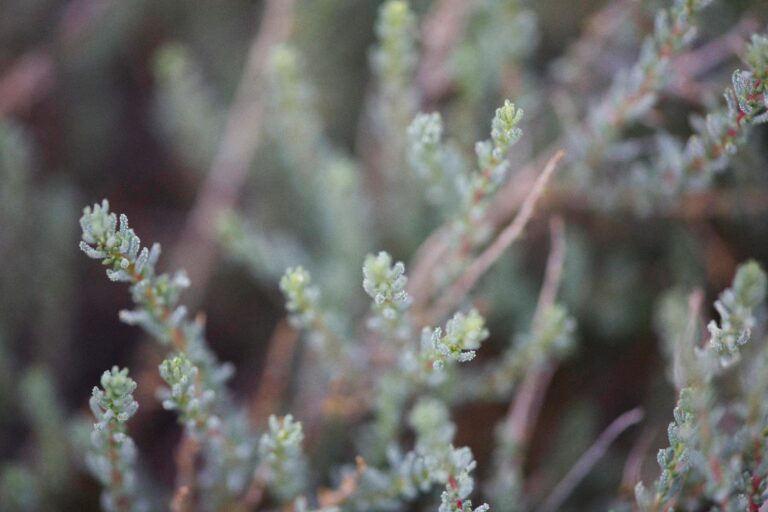
Beneficial for Pollinators and Biodiversity
In recent years, the alarming decline in bee populations has highlighted the need for pollinator-friendly gardens. Sedum Kamtschaticum steps up to the plate by offering a banquet of blooms that attract these essential creatures. Not only do these vibrant flowers provide vital sustenance for bees, but they also invite a diverse array of pollinators to your garden. Each visitor contributes to the larger picture of environmental preservation, turning your garden into a bustling hub of nature’s tireless workers.
So, when you plant Sedum Kamtschaticum, you’re not just adding beauty to your outdoor space; you’re participating in a movement toward a more sustainable and thriving ecosystem that benefits us all – plant, human, and pollinator alike.
Troubleshooting Common Sedum Growing Issues
If you’ve ever experienced the heartbreak of watching your sedum kamtschaticum go from lush to lackluster, you’re not alone. Let’s turn that frown upside down with expert advice to put your sedum back in the spotlight! Imagine the vibrant, succulent leaves thriving under your care—here’s how to make it a reality.
Legginess: When Sedum Takes a Walk on the Wild Side
Legginess in plants is like a teenager’s rebellious phase—it happens. But fear not! This usually means your plant is playing a game of “stretch” to reach more light. To curb this, move your sedum to a sunnier spot. If outdoors, imagine a sunbathing beauty—that’s your sedum in an open, sunny area. As an added bonus, you can pinch back the leggy growth for a more compact, runway-ready presentation.

The Flowerless Faux Pas: Solving Poor Blooming
Is your sedum kamtschaticum holding out on flowers? It might just be playing hard to get with the nutrients. Like a gym enthusiast needing their protein shake, your sedum craves feeding during the growing season. A balanced, slow-release fertilizer can be a game-changer. Also, take a cue from Goldilocks, ensuring the soil moisture is just right—not too dry, not too soggy.
So there you have it, green thumbs! With these pro tips, you’re ready to nurse your sedum kamtschaticum back to prime condition. Remember, plants, like us, need attention and TLC. Give them what they need, and they’ll grace your garden with their unparallel beauty. Here’s to the journey of growing together!
Frequently Asked Questions
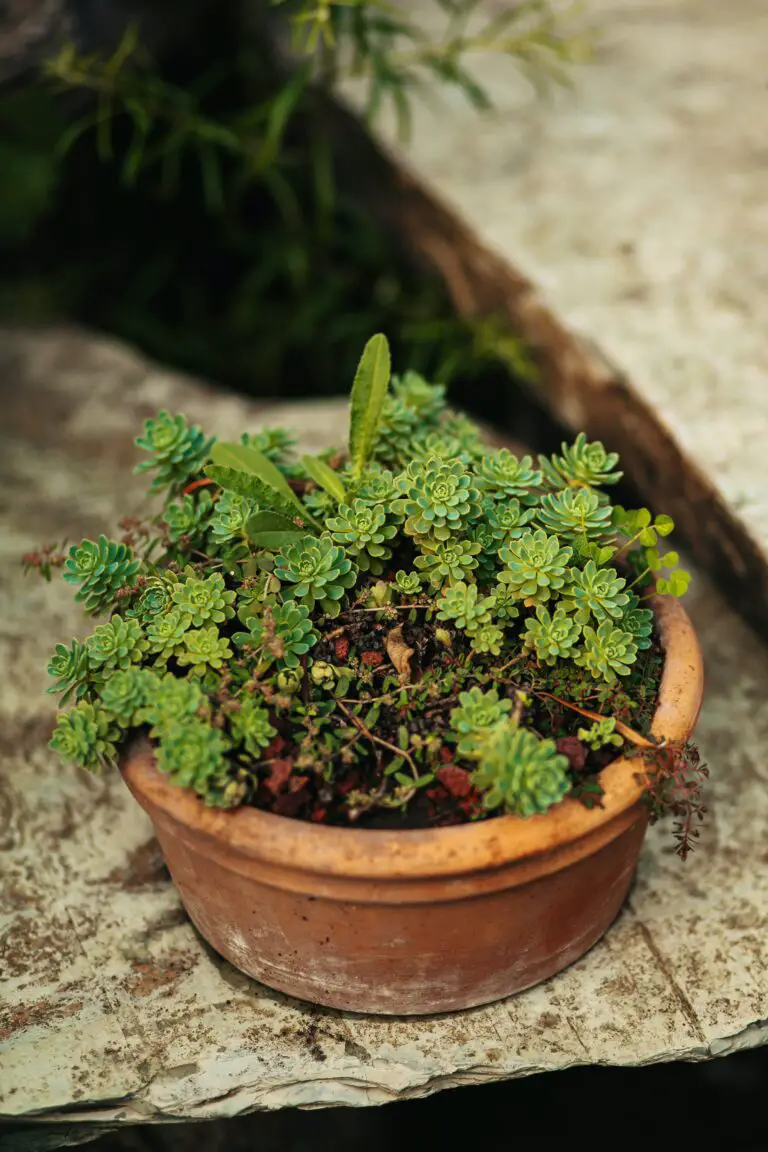
Caring for Sedum Kamtschaticum in the Cycles of Seasons
As the wheel of the year turns, your Sedum Kamtschaticum, commonly known as Russian Stonecrop, faces new delights and demands. In the warming embrace of spring, this hardy trooper requires minimal fuss—just ensure it’s basking in sunlight and singing in well-drained soil. Summer’s zenith calls for vigilance against excessive heat; keep its thirst quenched with moderate watering, respecting its succulent nature. Should autumn’s chill whisper, your resilient green friend simply asks for a reduction in water as its growth slows. Lastly, winter’s icy grip poses little threat to the dormant Russian Stonecrop, but heavy snowfall? Brush it off gently to prevent any soggy mishaps!
Perfect Pairings: Companion Plants for Your Sedum
Imagine a social gathering in your garden where Sedum Kamtschaticum is the star. Who’s on the guest list? Lavender, with its calming scent and contrasting spiky blooms; Catmint, waving its delicate purple flowers in the breeze, and Ornamental Grasses, creating a backdrop with their graceful, swaying form. These companions enrich your garden’s biodiversity, creating a tableau of textures and depth that collectively laugh in the face of pests and diseases.
Taming the Enthusiastic Grower
Left to its own devices, the zealous spreader can turn into a botanical invader, inching into territories of neighboring plants. The key to harmony in your green sanctuary? Regular checkups! A simple spring trim keeps it within bounds. If it’s commandeered too much territory, divide it in the fall. With each division, you’re not only reigning in the sprawl but creating gifts for fellow green thumbs. After all, sharing your thriving greenery can be the start of a blooming friendship.
Remember, your Sedum Kamtschaticum isn’t just a plant; it’s a living, breathing piece of an ever-changing tapestry that is your garden. With these tips, you’ll ensure it contributes its fullest to the vibrant quilt of greenery adorning your outdoor sanctuary.


